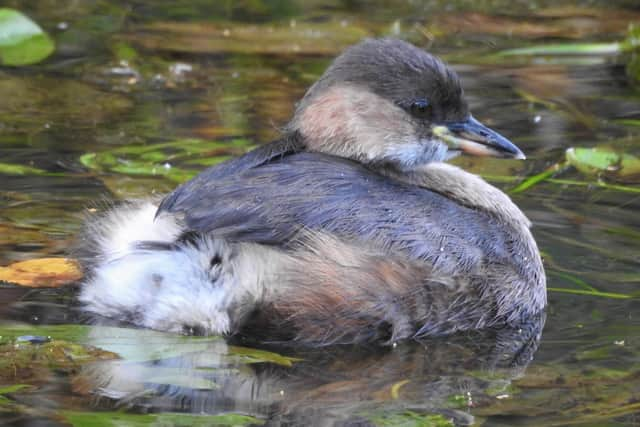Little grebes are now in their winter colours, says Sheffield wildlife expert


The little grebe, or ‘dabchick’ as it is commonly known, is the smallest British grebe at about half the size of a moorhen.
These are diving waterbirds which are accomplished underwater swimmers feeding on both small fish and aquatic invertebrates such as crustaceans and insect larvae.
Advertisement
Hide AdAdvertisement
Hide AdDuring the summer months the grebes are highly territorial and a pair will establish and defend their territory along a linear watercourse such as a river or canal.
Here they build their nests on floating platforms constructed from pondweeds and the like.
At this time, the adult birds are brightly coloured and highly vocal with a surprisingly loud whinnying song; you often hear them well before you see them.
By the time winter is upon us the little grebe loses its red and gold plumage and adopts a mix of subdued buff, off-white, and black.
Advertisement
Hide AdAdvertisement
Hide AdThe dark bill is changed to a pale grey, but they retain the bright yellow blob at the base.
If this winter is another mild one, then breeding numbers next year will to rise again.
Prof Ian D Rotherham, of Sheffield Hallam University, a researcher, writer and broadcaster on wildlife and environmental issues, is contactable on [email protected]
Follow his Walk on the Wildside’ blog at ukeconet.org for more information.
A message from the Editor
Advertisement
Hide AdAdvertisement
Hide AdIn these confusing and worrying times, local journalism is more vital than ever. Thanks to everyone who helps us ask the questions that matter by taking out a digital subscription or buying a paper. We stand together. Nancy Fielder, editor.
Read more from Prof Rotherham:
Talking about hedgehogs, he says…
Hedgehogs love piles of twiggy rubbish under which they can nest or in winter, hibernate.
So, when rewilding your garden, it is worth using cuttings of woody shrubs and the like to form low, dry mounds which can be covered with green herbaceous material over the top.
You can buy a pre-made ‘hedgehog house’, but the brash pile is cheaper and equally or more tempting for would-be residents.